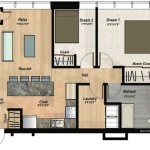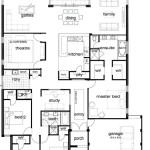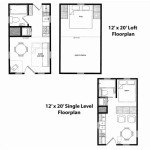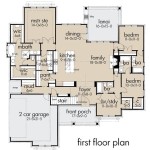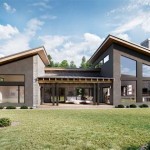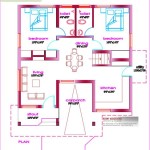Old Victorian Homes Floor Plans: A Journey Through Time
Victorians were renowned for their ornate and elaborate architecture, and their homes were no exception. Floor plans of old Victorian homes showcase a fascinating blend of practicality, aesthetics, and social etiquette. As we delve into these intricate layouts, we uncover a glimpse into the lives and aspirations of this bygone era.
The Formal Entryway
Victorian homes typically featured a grand entryway, creating a stately first impression. These spaces often boasted high ceilings, intricate crown moldings, and elaborate staircases. The entryway served as a pivotal point, connecting the formal and private areas of the home.
Formal Living and Dining Rooms
Adjacent to the entryway were formal living and dining rooms. These rooms were designed to impress guests and showcase the family's wealth and status. They were typically spacious, adorned with rich fabrics, ornate furniture, and lavish chandeliers.
The Library
For many Victorian families, the library was a sanctuary for reading and intellectual pursuits. These rooms were often tucked away in a quiet corner of the home, providing a sense of privacy and seclusion. Floor-to-ceiling bookcases lined the walls, housing an impressive collection of literature and knowledge.
The Parlor
The parlor was another formal entertaining space, primarily used for afternoon tea and polite conversation. It was typically located near the living room and often connected to a garden or conservatory. The parlor exuded elegance with its delicate wallpaper, soft furnishings, and an abundance of natural light.
The Kitchen and Service Areas
While the formal spaces were designed for entertaining, the kitchen and service areas were crucial to the home's functionality. Kitchens were often tucked away at the back of the house, ensuring that cooking odors and noise would not disturb the family. Sculleries and pantries provided ample storage for food and supplies.
The Bedrooms
Victorian bedrooms were generally spacious and well-lit. The master bedroom was typically located on the second floor and often featured a private sitting area or dressing room. The children's bedrooms were often tucked away on the upper floors, offering a sense of privacy and seclusion.
Bathrooms and Lavatories
Bathrooms and lavatories were often located on the upper floors, adjacent to the bedrooms. These rooms were typically small and functional, with cast iron bathtubs and pedestal sinks. The Victorian era saw significant advancements in plumbing and sanitation, which made these amenities more accessible.
Conclusion
Old Victorian homes floor plans offer a captivating glimpse into the past, showcasing the opulence, functionality, and social customs of this remarkable era. From the grand entryway to the private bedrooms, each space tells a story of the lives lived within these architectural masterpieces. Understanding these layouts deepens our appreciation for the intricate designs and social norms that shaped this fascinating period in history.

House Plans Victorian Vintage Sims

Vintage Victorian House Plans 1879 Print Plainfield George La Baw Floor Mansion Plan

The Glen Flora Victorian House Plans Old Vintage

1891 Print Home Architectural Design Floor Plans Victorian Architecture Dwelling House

Untitled Victorian House Plans Mansion Floor Plan Homes

House Plan 73837 Victorian Style With 4200 Sq Ft 2 Bed Bath

Modern Cottages J H Kirby Architect Victorian House Plans Vintage

Historical Building Collectibles For Victorian House Plans Homes Mansion Floor Plan

Victorian House Plans Floor The Designers

Victorian Style House Plan 4 Beds 2 5 Baths 2174 Sq Ft 72 137 Houseplans Com


